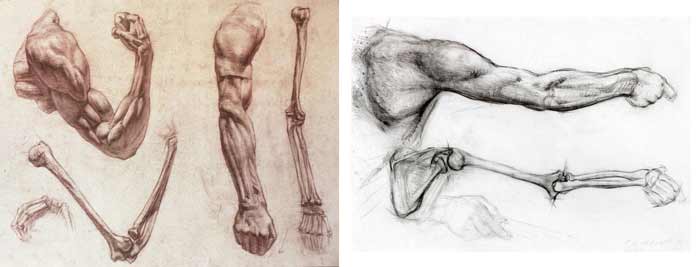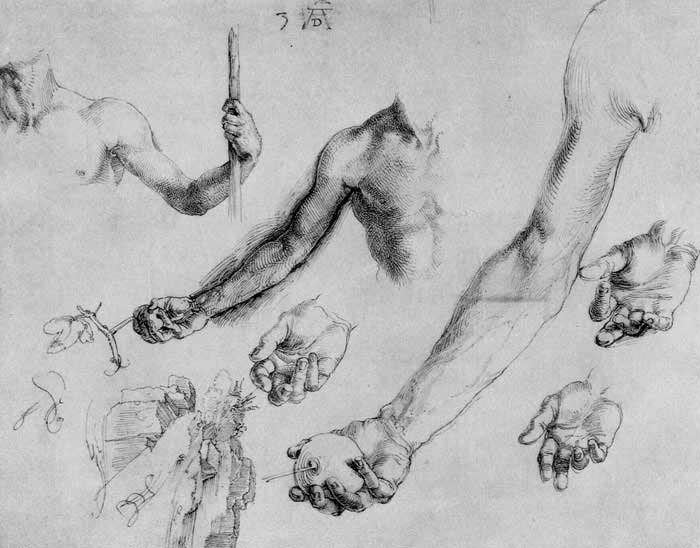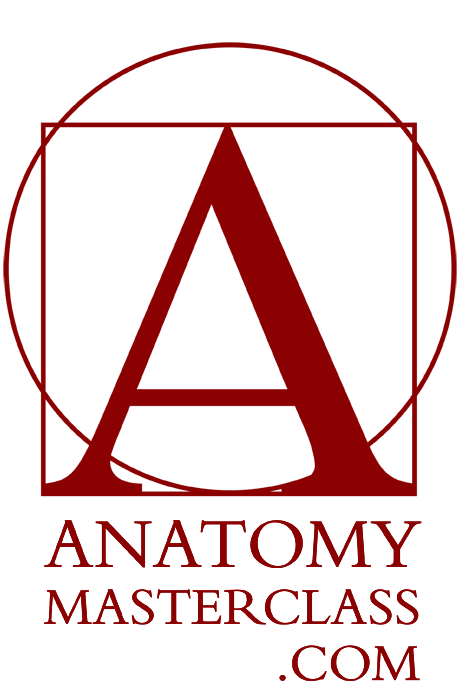Anatomy of the Arm
Anatomy of the Arm
Anatomy Lesson 10 – Part 2
In this video lesson you will discover the anatomy of the arm.
Anatomy of the Arm for Figurative Artists
The upper arm bone is called the humerus. At the lower end of this bone, there are two projections of the upper arm bone; they are called the lateral and medial epicondyles of the humerus.
Between these two projections is the tip of the elbow (located at the upper end of the ulna).
In the anatomy of the arm, bones of the lower arm are called the ulna and the radius.
The ulna travels downward to the side of the wrist closer to the little finger.
The radius extends diagonally from the outer end of the humerus to the side of the wrist closer to the thumb.
In the pronation position, the line of the radius crosses the ulna.
The shoulder area of the upper arm is shaped by the big and powerful muscle called the deltoid. The deltoid muscle has a triangular shape. The frontal portion of this muscle starts at the collarbone. The side portion of the deltoid starts from the acromion of the shoulder blade. And the back portion starts from the spine of the shoulder blade. This muscle inserts into the approximate middle of the humerus. It assists in raising the arm horizontally, raising the arm in front of the body, and moving the arm back behind the torso.



Another prominent muscle of the upper arm is called the biceps brachii. The name biceps suggests that the muscle has two heads. The main action of this muscle is to flex or bend the arm at the elbow joint.
The triceps brachii occupies the whole backside of the upper arm. It has three portions. These portions are attached to the humerus and the scapula, or the shoulder blade. In a single tendon, all three portions insert into the elbow projection of the ulna.
The flexor group of muscles begins from the lower, inner end of the humerus, or the upper arm bone.
Muscles of this group insert into the carpal bones – which are the bones of the wrist – and the metacarpal bones, which are bones of the palm. This group of muscles flexes the hand at the wrist joint, bringing it closer to the forearm.
The brachioradialis muscle, which has a similar function, begins from the outer, lower end of the humerus.
The bodies of these flexor muscles reside in the upper half of the forearm, making the forearm wider. However, at the lower half of the forearm, they become tendons, making the lower forearm slimmer than the upper half.
In fact, the lower half of the forearm is almost as wide as the two bones of the forearm: the ulna and the radius.
In the supination position that we are drawing right now, these two bones run parallel to each other.
The extensors group of muscles begins at the outer, lower edge of the humerus and inserts into the outer part of the carpal and metacarpal bones…
[ The full lesson is avaibale to Anatomy Master Class members ]
To learn more about anatomy of the arm, enroll in the Anatomy Master Class
Simple Pricing, No Surprises
One-time payment - Only $97 USD
ENROLL NOW



